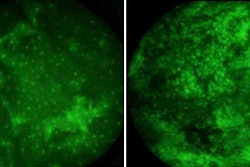Case Western Reserve University School of Dental Medicine researchers have discovered a biomarker, human beta defensin-3 (hBD-3), that may serve as an early warning sign for oral cancer (PLoS One, June 8, 2010).
The hBD-3 biomarker is one of many innate immune peptides found in the epithelial lining of the mouth. In a normal, healthy oral cavity, hBD-1, -2, and -3 ward off the hundreds of bacteria that constantly challenge the human immune system in the mouth.
While hBD-1 and -2 are on the frontline defense, hBD-3 is only found in the basal layer where oral cancers grow. The researchers discovered that the hBD-2 disappears and only hBD-3 is present when a cancerous tumor progresses.
The lone presence of hBD-3 made the research team question the biomarker's role on tumor growth. They found that it attracts other molecules that actually help the cancerous tumor grow and eventually spread to other parts of the body.
It appears hBD-3 plays a role in the development of the chemokine receptor called CCR2 that recruits tumor-associated macrophage cells to infiltrate the tumor site and stimulate tumor growth. The tumor-associated macrophages and other molecules release growth factors that encourage the progression of the tumor. Eventually tumor cells break away, travel, and spread the cancer to other places in the body.
"This is the first time that we have evidence that CCR2, too, has a role in oral cancer growth," said lead study author Ge Jin, Ph.D., an assistant professor of biological sciences at the dental school.
The research team plans to continue studying the role of hBDs in oral health and to develop diagnostic tools that use the biomarker to detect early cancer.
Copyright © 2010 DrBicuspid.com



















